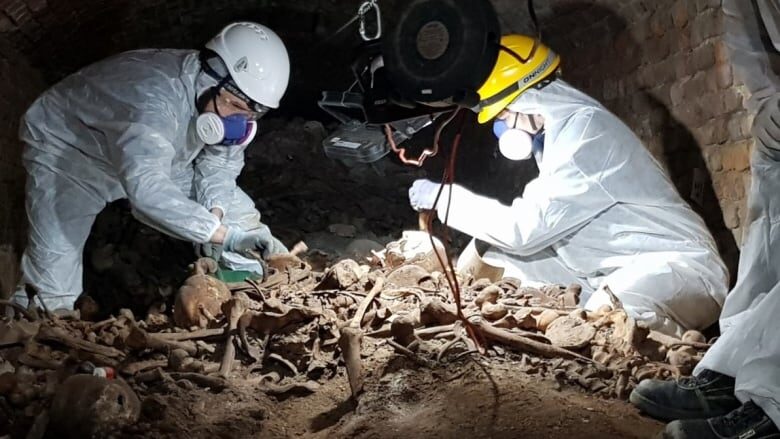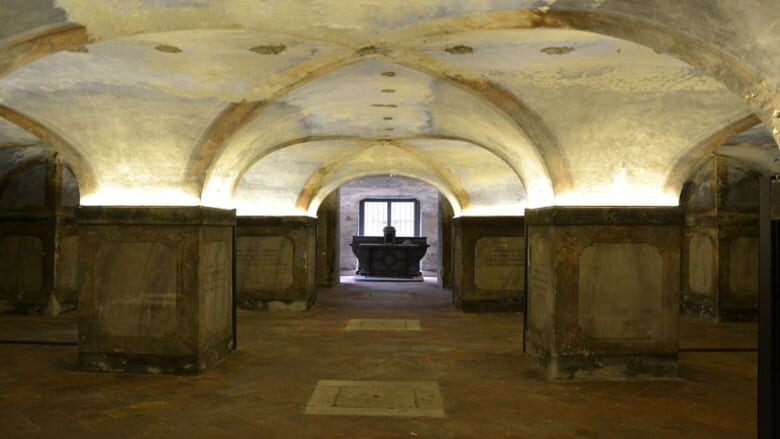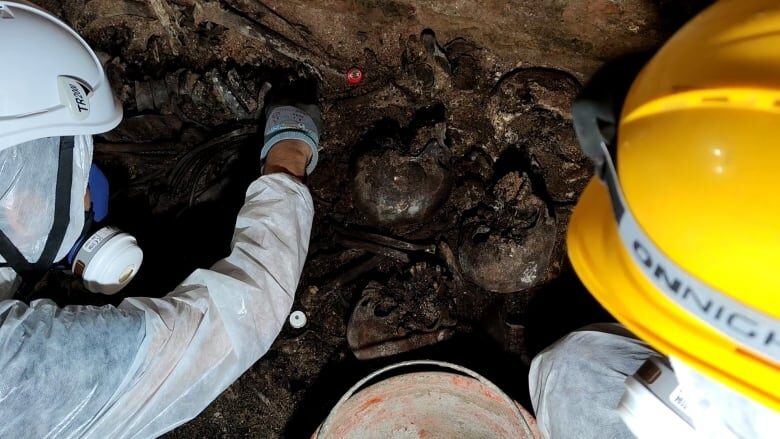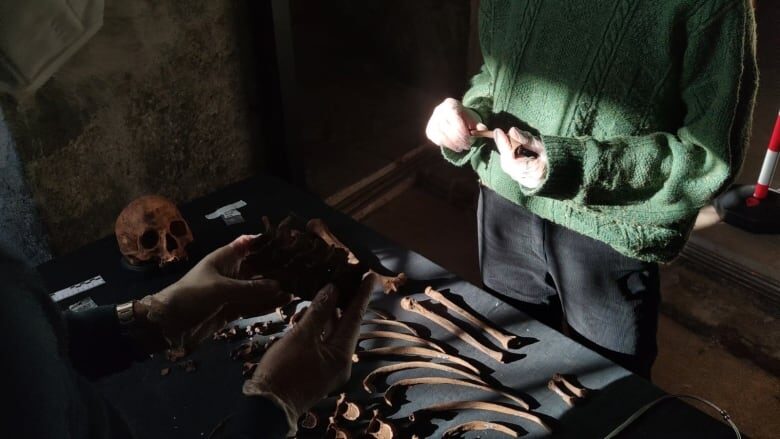
Ancient Greek historian Herodotus wrote about flowers with psychotropic effects in 440 BC, and medical records from the Middle Ages in Europe show cannabis was widely administered to treat everything from gout, urinary infections and birthing pains to weight loss, as well as being used as an anesthetic.
But in 1484, Pope Innocent VIII passed a bull, or decree, labelling cannabis an "unholy sacrament" and banning its use among the faithful. During the time of the Inquisition, medicinal and hallucinogenic herbs were associated with magic and witchcraft.
For the centuries that followed, there has been no hard evidence of its use — that is, until now, with the discovery by a team of forensic scientists in Milan, Italy, of traces of cannabis in the remains of two skeletons from the 17th century.

"This is an important finding, because there are very few laboratories that can examine bones to find traces of drugs."
Signs of recreational use
The study was published in the December issue of the peer-reviewed Journal of Archaeological Science.
In it, the team of scientists examined nine femoral bone samples from people who lived in 1600s Milan and who were buried in the Ca' Granda Crypt, under a church annexed to the Ospedale Maggiore, the city's most important hospital for the poor at the time.
Gaia Giordano, a biologist and doctoral student at the University of Milan, talks about the first study to find traces of cannabis in human bones.
The goal of the study was to find traces of plants used for medical or recreational purposes in the general population. (It follows an earlier study by Giordano that found traces of opium in cranial bones and well-preserved brain tissue.)
In the study, two of the bones — one belonging to a woman around age 50 and another to a teenage boy — showed the presence of two kinds of cannabinoids: Delta-9-tetrahydrocannabinol and cannabidiol, commonly referred to today as DTC and CBD.
The researchers say the finding not only suggests cannabis was consumed by all ages and genders, but that it was used recreationally, most likely prepared in cakes and infusions, says Giordano.
The team scanned the medical records of Ospedale Maggiore and found no mention of cannabis in its detailed records of the healing plants, remedies and potions administered to patients in all hospitals in Milan in the 1600s.
Comment: Could it be that it wasn't included in the official list because there was a stigma attached to it due to the ban by the Catholic Church? Perhaps people supplemented with it alongside the officially prescribed medications?

Its absence in the list of pharmacopeia led researchers to surmise cannabis found in the two individuals was likely used for the same reasons it is today — to relax, zone out or self-medicate.
"Life was especially tough in Milan in the 17th century," archaeotoxicologist Domenico di Candia, who led the study, told the newspaper Corriere della Sera. "Famine, disease, poverty and almost nonexistent hygiene were widespread."
Three centuries after the Catholic Church's ban on cannabis, Napoleon prohibited its consumption due to it causing psychic disturbances and violent delirium among his soldiers in Egypt; he hoped the ban would stop them from bringing it back home to France.
For centuries, Italy was a major producer of hemp, the fibre of the cannabis plant, which was used in paper, ropes and textiles — including the sails on Christopher Columbus's ship — as well as for feed for livestock and as a fertilizer.
Marco Perduca, a former Italian senator and founder of Science for Democracy who led a referendum to legalize pot in 2021, says the ubiquity of hemp in Italy makes it likely it was also consumed to get a buzz.
"People used to smoke and make 'decotto,' or boiled water, with all kinds of leaves, so it is very difficult to identify what was the habit back then," Perduca said. "But because hemp was used for so many industries, it's possible that people knew those plants could also be smoked or drunk."
Comment: It's notable that some people apparently smoked an array of plants, because it's now thought that the beneficial effects of nicotine are most effectively administered through smoking: A comprehensive review of the many health benefits of smoking Tobacco
Social shame
While there are written references that the plant was administered as a home remedy or by healers for various ailments over the past centuries, by the late 19th century, bans against it spread, with the stigma lasting to this day.
Perduca says the social shame is related to the idea that a substance that is perceived as making you lose your mind or that transports you into a narcotic state runs counter to obedience to yourself — and more importantly, to the Catholic Church, until recently a powerful temporal and political institution.

"So anything and everything that had to do with a non-purely Christian set of rules...was supposed to be linked with paganism and movements not only against the Church, but against the [Holy Roman] Empire."
Today in Italy, cannabis is legal for medical purposes, but opposition to it continues, with the present and the last Italian government pushing to include CBD, a non-psycho-active molecule, in the schedule of narcotic substances.
As the debate over legalizing cannabis continues in Italy, scientists are debating whether or not the presence of the substance discovered in the bones reflects high and frequent use of the drug — and use just prior to the time of death.
Comment: It's use prior to death might reflect it's therapeutic, rather than recreational, use.
To get a clearer picture, they plan to continue their research on other human remains in a collection of some 10,000 bones buried beneath the Ca' Granda crypt.
LABANOF also has another 10,000 skeletons dating back to Ancient Roman times.
Its lead scientist, Cristina Cattaneo, who studied at McGill University, has gained international renown in recent years for her work identifying the bodies of recently deceased migrants and other unclaimed persons — often marginalized — and fighting for their right to a name.



Comment: See also: